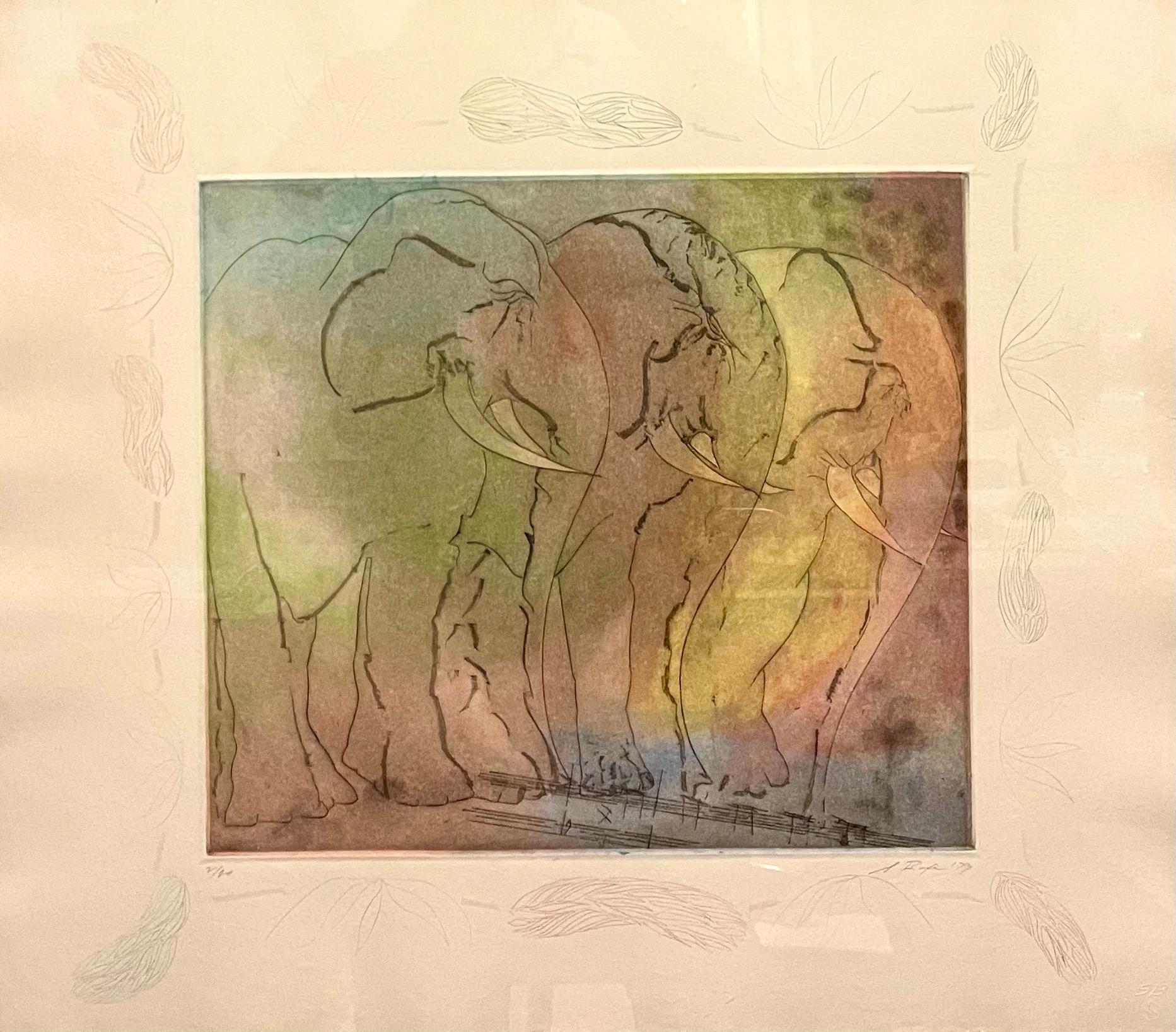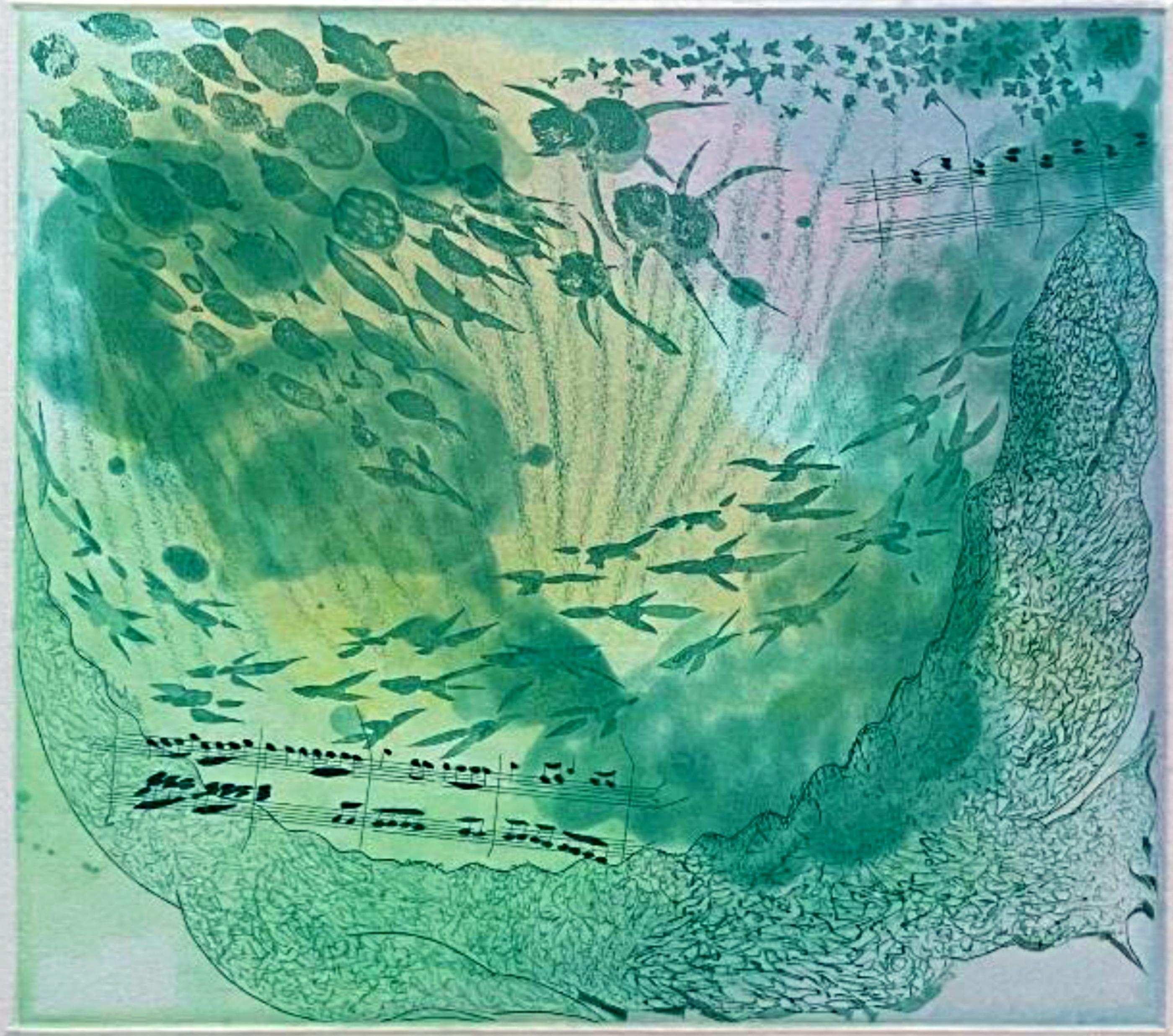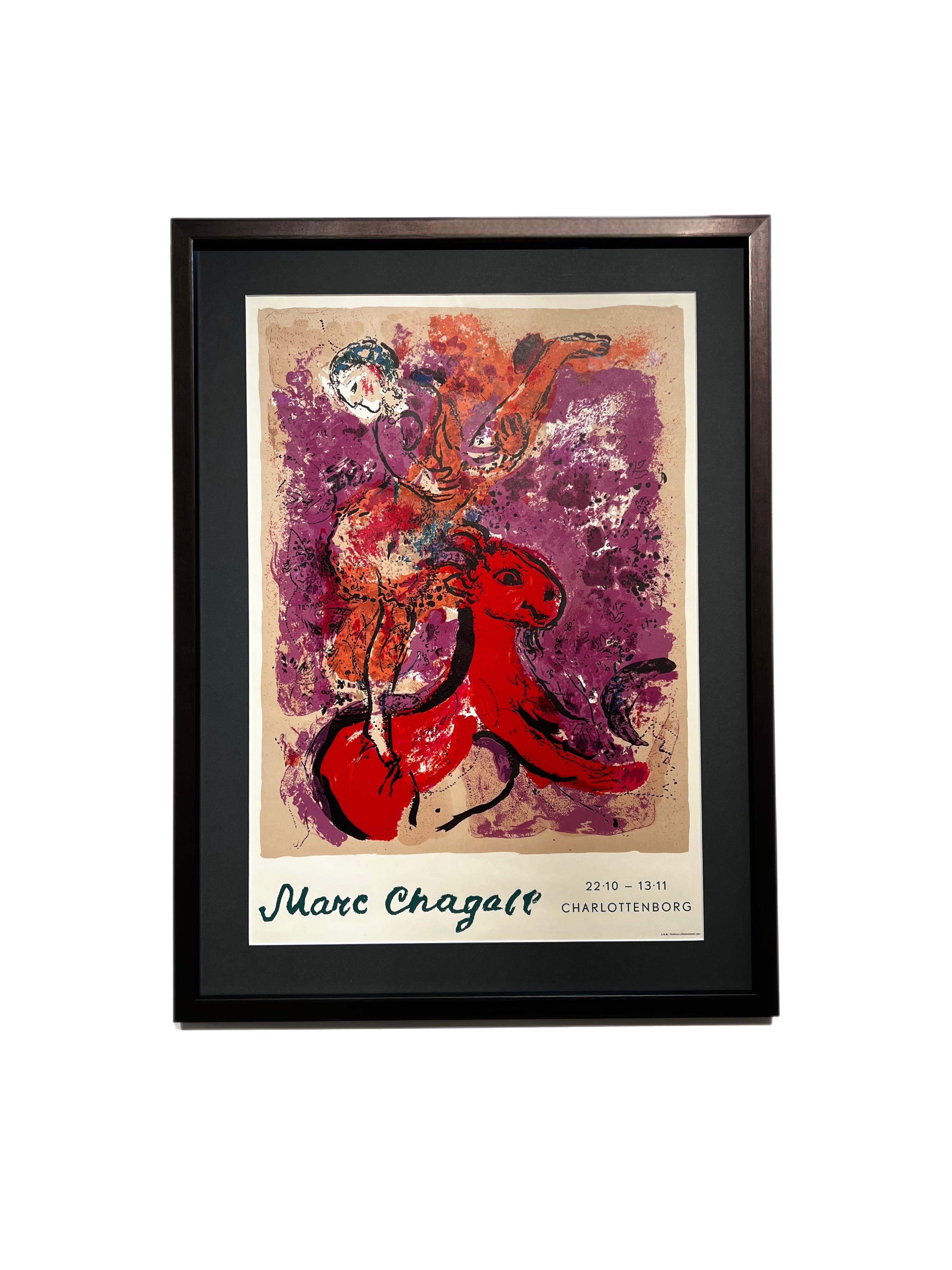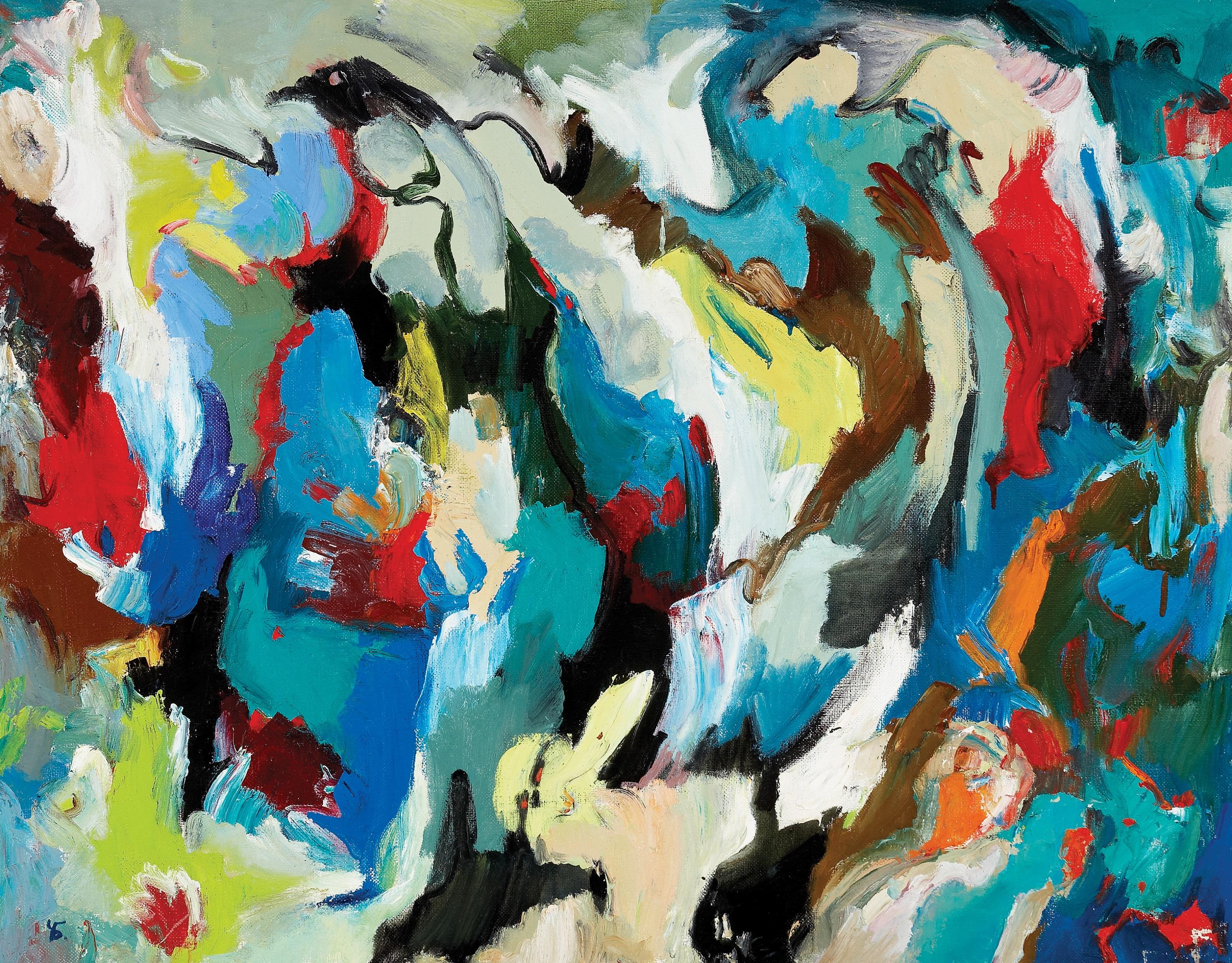Items Similar to Magnificent Jungle Cats
Want more images or videos?
Request additional images or videos from the seller
1 of 11
Louise NevelsonMagnificent Jungle Cats1953-55
1953-55
About the Item
Magnificent Jungle Cats
Etching, drypoint and monoprint inking of the plate
Printed by the artist at Atelier 17, New York
Annotated 1/5 in pencil
Estate stamp and number, verso
Edition: 5
Note: An exceptional example of the artist’s experimental print making and monotype inking. Housed in a 22K gold leaf frame with archival matting.
Condition: Usual ink in the margins and soft folds for a trial proof printed at Atelier 17 New York
Image/Plate size: 11 5/8 x 13 3/4 inches
Frame size: 27 x 30 inches
Provenance:
Estate of the artist (Foundation stamp and pencil number 70046.1 LN verso)
Jeffrey Hoffeld (Nevelson estate agent)
G. W. Einstein
References:
Gene Baro, Nevelson: The Prints (New York: Pace Editions, 1974), 15, trial proof with selective monoprint inking.
Louise Nevelson
(1899-1988)
Creator of wood assemblages made from found objects and parts of furniture doused in black paint, Louise Nevelson became the darling of the New York art world, especially during the last three decades of her life when her success was assured. She cultivated an artistic image, was thin and draped clothes haphazardly on her figure, smoked small cigars, and wore exceedingly long, fake eyelashes.
She was born Louise Berliawsky in Kiev, Russia, and at age five, moved with her family to Rockland, Maine where her father ran a lumber yard. In a town that was mostly Protestant, middle class, white people, she felt out of place as a Jew and an immigrant. In 1920, she moved to New York, studied at the Art Students League with Kenneth Hayes Miller, and married Charles Nevelson, whose "WASP" family she regarded as terribly stuffy. They had a son, and when he was nine years old, she went to Munich to study, separating from her husband and leaving her son for several years with her parents.
In Germany, she studied with Hans Hoffman until the Nazis drove him away, and then she studied in Paris before returning to America to raise her son and pursue her art career. From 1932 to 1933, she was in Mexico as an assistant to muralist Diego Rivera. In 1941, she had her first one-woman show, which was held at the Nierendorf Gallery in New York, but her break through did not come until 1957, when she began her box-like assemblages and received much critical acclaim.
In 1959, Louise Nevelson was one of "Sixteen Americans" in an important Museum of Modern Art exhibition. In the mid 1960s, she began welding found objects to welded steel, and directed a team of workers to make her black painted sculptures. For her, the color black symbolized harmony and continuity.
She also held several teaching positions including at the Educational Alliance in New York City; the Adult Education Program in Great Neck, New York; and at the New York School for the Deaf.
Nevelson lived to age eighty nine, and was much pleased that her son, Mike, also became a successful sculptor. In 1976, she wrote her autobiography, Dawns and Dusks, in which she credited her own determination for her success. In recognition of that success, the U.S. government in 2000 issued special Louise Nevelson commemorative stamps, with five varieties, each with a photo of one of her monochrome sculptures.
Courtesy: AskArt
Sources include:
Charlotte Streifer Rubinstein, American Women Artists
Marika Herskovic, American Abstract Expressionism of the 1950s
- Creator:Louise Nevelson (1899 - 1988, American)
- Creation Year:1953-55
- Dimensions:Height: 20 in (50.8 cm)Width: 25.75 in (65.41 cm)
- Medium:
- Movement & Style:
- Period:
- Condition:
- Gallery Location:Fairlawn, OH
- Reference Number:
About the Seller
5.0
Recognized Seller
These prestigious sellers are industry leaders and represent the highest echelon for item quality and design.
Platinum Seller
These expertly vetted sellers are 1stDibs' most experienced sellers and are rated highest by our customers.
Established in 1978
1stDibs seller since 2013
711 sales on 1stDibs
Typical response time: 1 hour
Associations
International Fine Print Dealers Association
- ShippingRetrieving quote...Ships From: Fairlawn, OH
- Return PolicyA return for this item may be initiated within 10 days of delivery.
More From This SellerView All
- La Pique (The Pike)By Pablo PicassoLocated in Fairlawn, OHLa Pique (The Pike) Lithograph, 1950 Original lithograph drawn with chalk and "frottage textures" transferred to stone, 1950. Unsigned printer's proof Inscribed on the verso in Mourl...Category
1950s French School Animal Prints
MaterialsLithograph
- Strange AnimalsBy Ray H. FrenchLocated in Fairlawn, OHSigned, dated, and titled in pencil by the artist Edition: 100 in two printings; This impression an artist's proof from the second printing by Jon Clemens, master printer.Category
1940s Abstract Animal Prints
- Snowy EgretBy Ray H. FrenchLocated in Fairlawn, OHSigned, dated, and titled in pencil by the artist Dedicated: "To Jon From Ray" Edition: 100 in two printings A studio proof from the second printing by Jon Clemens, master printe...Category
1950s Abstract Geometric Animal Prints
MaterialsEngraving
- Le Poissons magiqueBy Mario AvatiLocated in Fairlawn, OHSigned, titled and numbered in pencil Edition: Epreuve d'Artiste viii/X Reference: Passeron 359Category
1960s Abstract Geometric Animal Prints
MaterialsMezzotint
- Through Wind and Water (Notre Dame Gargoyle)By John Taylor ArmsLocated in Fairlawn, OHSigned in pencil Edition: 75 Gargoyle Series No. 7 This impression probably printed by David Strang, 1937-38 Sheet: 9 1/4 x 11 1/4" Reference: William Dolan Fletcher, John Tay...Category
1920s American Realist Still-life Prints
MaterialsEtching
- Blue WingBy Paul H. WinchellLocated in Fairlawn, OHBlue Wing Etching, c. 1940 Signed in the lower right (see photo) Created while the artist was a commercial artist working in Minneapolis, after his tenure o...Category
1940s American Realist Animal Prints
MaterialsEtching
You May Also Like
- Fantastic Zoology I.Located in Slovak Republic, SKLovely etching, framed, with fine art glass. Signed, E/A.Category
20th Century Abstract Abstract Prints
MaterialsEtching
- “Truth is Stranger than Fiction” Black and White Abstract Etching Edition 4/15By Margaret Smithers CrumpLocated in Houston, TXBlack and white abstract etching by Houston artist Margaret Smithers-Crump. The work features a collection of abstracted sea creatures such as a crab, eel, and puffer fish. Signed, t...Category
1980s Abstract Abstract Prints
MaterialsEtching
- Stanley Boxer Aquatint Intaglio Etching Elephant Herd Abstract ExpressionistBy Stanley BoxerLocated in Surfside, FLElephants. 1979 edition 2/20 Hand signed and dated Framed 24.5 X 28. Sheet 23 X 26 This is from a series of prints Boxer produced at Tyler Graphics between 1975 and 1979. Over this period, he created several series of intricately rendered figurative works, illustrating whimsical scenes featuring animals, plants and nubile winged figures. Boxer had, however, been making drawings of this nature throughout his career, and he insisted they were closely connected to his abstracts, made with similar gestures and motivation. The Tate Museum received twenty-five of Stanley Boxer’s prints as a gift of Kenneth Tyler from Tyler Graphics, comprising a complete portfolio of Ring of Dust in Bloom, 1976, an incomplete portfolio of Carnival of Animals, 1979, and two individual prints. This work is from Carnival of Animals, a portfolio of fourteen intaglio prints on handmade paper. Tate holds eleven of the prints from this portfolio (Elephants, Swan and Fossils are not in Tate’s collection). Stanley Boxer (1926-May 8, 2000) was an American abstract expressionist artist best known for thickly painted abstract works of art. He was also an accomplished sculptor and printmaker. He received awards from the Guggenheim Fellowship and the National Endowment for the Arts. Boxer was born in New York City, and began his formal education after World War II, when he left the Navy and studied at the Art Students League of New York. He drew, painted, made prints, and sculpted. His work was recognized by art critic Clement Greenberg, who categorized him as a color field painter, A group that included Barnett Newman, Clyfford Still, and Mark Rothko and was a form of Abstract Expressionism and later included Helen Frankenthaler, Ad Reinhardt, Kenneth Noland, Gene Davis, Jules Olitski, Raymond Parker and Morris Louis. Boxer himself was adamant in rejecting this stylistic label. Over the years, he remained loyal to the materially dense abstract mode on which his reputation rested.. Art critic Grace Glueck wrote "Never part of a movement or trend, though obviously steeped in the language of Modernism, the abstract painter Stanley Boxer was a superb manipulator of surfaces, intensely bonding texture and color." In 1953 Boxer had his first solo exhibition of paintings in New York City, and showed regularly thereafter until his death. His paintings and sculpture were represented in New York City during the late 1960s through 1974 by the Tibor de Nagy Gallery, then by the André Emmerich Gallery from 1975 until 1993, and finally by Salander-O'Reilly Galleries until its demise in 2007. Richard Waller, director of the University of Richmond's Harnett Museum of Art, describes his evolution as an artist: You can see the shift from working with figurative imagery in the 1940s and early '50s to abstraction in the late '50s. The abstraction in the late '60s and '70s was more derived from color-field issues. In the 1980s, Boxer really hit his stride in larger works with lots of thick paint and splashes of color. He sold a lot, and his success in the art world in the 1980s gave him the freedom to do what he wanted to do most. He was married to painter and artist Joyce Weinstein. The Boca Raton Museum of Art in Florida hosted an exhibition entitled Expanding Boundaries: Lyrical Abstraction Selections from the Permanent Collection. At the time the museum issued a statement that said in part: "Lyrical Abstraction arose in the 1960s and 70s, following the challenge of Minimalism and Conceptual art. Many artists began moving away from geometric, hard-edge, and minimal styles, toward more lyrical, sensuous, romantic abstractions worked in a loose gestural style. These "lyrical abstractionists" sought to expand the boundaries of abstract painting, and to revive and reinvigorate a painterly 'tradition' in American art. "Characterized by intuitive and loose paint handling, spontaneous expression, illusionist space, acrylic staining, process, occasional imagery, and other painterly techniques, the abstract works included in this exhibition sing with rich fluid color and quiet energy. Works by the following artists associated with Lyrical Abstraction will be included: Natvar Bhavsar, Stanley Boxer, Lamar Briggs, Dan Christensen, David Diao, Friedel Dzubas, Sam Francis, Dorothy Gillespie, Cleve Gray, Paul Jenkins, Ronnie Landfield, Pat Lipsky, Joan Mitchell, Robert Natkin, Jules Olitski, Larry Poons, Garry Rich, John...Category
1970s Abstract Expressionist Animal Prints
MaterialsEtching, Aquatint, Intaglio
- Finale, from Carnival of Animals (Tyler Graphics, 119:SB31)By Stanley BoxerLocated in New York, NYStanley Boxer Finale, from Carnival of Animals (Tyler Graphics, 119:SB31), 1979 Etching, aquatint, engraving and drypoint on hand colored TGL handmade paper Edition 16/20 Pencil sign...Category
1970s Abstract Expressionist Abstract Prints
MaterialsEngraving, Drypoint, Etching, Aquatint
- Woman Circus Rider on Red Horse - superb Chagall posterBy Marc ChagallLocated in London, GBOriginal lithographic poster printed by L.R.B Permild and Rosengreen.Category
Late 20th Century Abstract Abstract Prints
MaterialsLithograph
- Penguin MigrationLocated in Santa Fe, NMPENGUIN MIGRATION This hand crafted Giclee print on canvas of 'Penguin Migration', by Boris Chetkov, provides the opportunity to own and enjoy a Chetkov masterpiece at a very afford...Category
1990s Abstract Expressionist Abstract Prints
MaterialsGlaze, Gesso, Giclée




